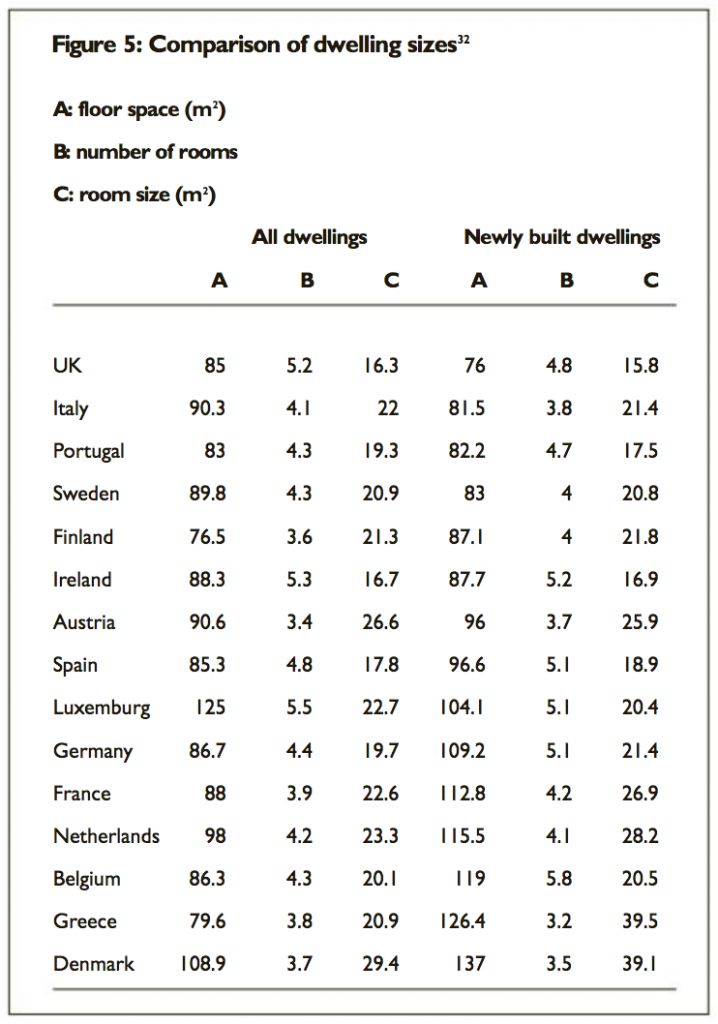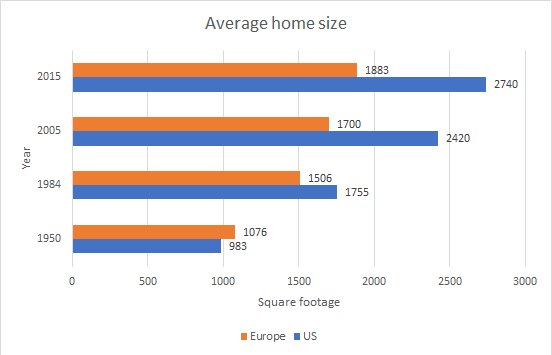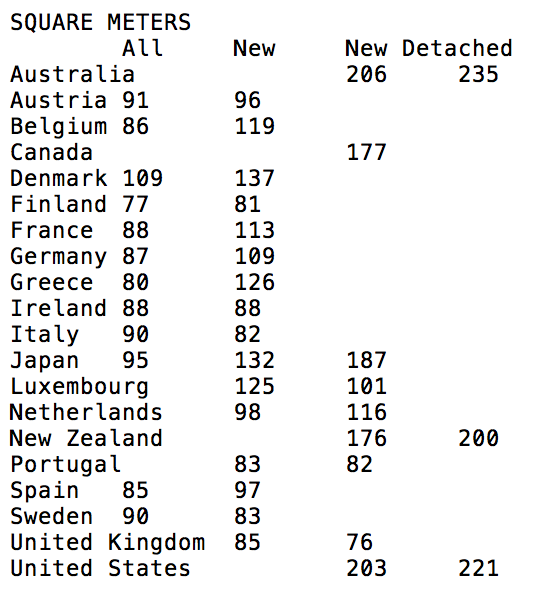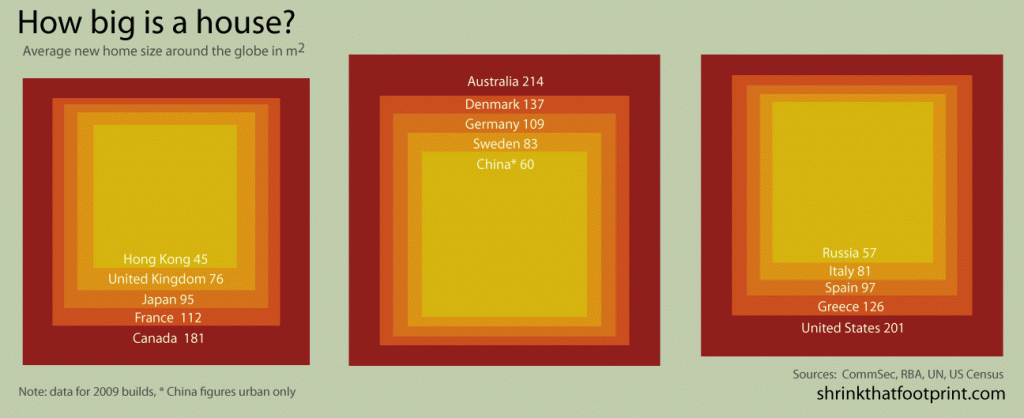Size of Homes, Global
Ask
What’s the size of average homes around the world?
Results
China & India Urban Residential Floor Space in 1993, 2002, 2008

Excerpt:
Average income growth has been a key reason behind these different trends in the quality of the housing stock. The urbanisation process in China has transferred large numbers of workers from relatively low productivity jobs in the rural sector to higher productivity jobs in urban areas. This movement has been a driver of the rapid growth in incomes in China over the past three decades, which has far exceeded the growth in incomes in India (Graph 7). Over time, Chinese households have chosen to spend their higher income on higher quality dwellings and dwellings with larger floor space and, as a consequence, the share of concrete dwellings and residential floor space per capita has increased.
src:
Reserve Bank of Australia, March 2014
“Housing Trends in China and India”
p.66
*
Europe Compared with US Home Sizes, 1950, 1984, 2005, 2015
Note: This graphic is a very rough assembly of data reported in mass media publications (not well-cited).
src:
Reddit user chyken
“Comparing average house size in US to Europe, 1950-2015 [OC]”
citing US Census, Elle Decor, Apartment Therapy, Not Buying Anything
*
Europe Home Sizes (all vs. newly built)

src:
Evans & Hartwich, 2005
“Unaffordable housing: Fables and myths”
p. 41
*
Europe, Australia, Canada, US, Japan (single year)
src:
Demographia (Wendell Cox), 2006 (data via IA)
“International House Sizes”
citing Japan Statistical Yearbook, European Housing 2002, Australian Bureau of Statistics, Canadian Home Builders Association, Infometrics.
*
Home Sizes: Select Europe, US, Canada, China, Australia, Japan (single year)
Note: Lots of overlap with Demographia set, above, but some additional countries
src:
Shrink That Footprint, 2013 (date via IA)
“How big is a house? Average house size by country”






